|
Dogs depend on us for friendship, food, and shelter. But wild animals run from people. They don’t turn to humans for help in getting out of trouble. Or do they? Until recently, most scientists thought animals could not think through multiple steps to solve problems. They believed only people could do that. But research into animal behavior shows this is not true. At least some animals think through their problems and come up with possible solutions. Take a young, wild raven, in Elmsdale, Nova Scotia, for example. In 2013, Gertie Cleary spied the bird perched on a fence—with porcupine quills stuck in its wing and face. Porcupine quills are barbed, like a fish hook. And they really hurt. So Cleary slipped on a pair of gloves before approaching the bird. Now you might think the raven would get scared and fly away. But not this bird. This bird wanted help. It screeched in pain each time Cleary plucked out a quill. But it sat still and let her do it. “When I pulled the one out of his wing,” Cleary says, “he fell off the fence I pulled it so hard.” Once quill-free, the raven flew away. A real-life mother goose went a step further. When one of her goslings got tangled up in a balloon string, she “called” the cops by pecking on the door of a police cruiser parked nearby. When the curious cops got out of their vehicle, she led them straight to her helpless baby. My family and I also encountered a bird in trouble. We were walking on a nature trail when the bushes suddenly erupted with chirping. We stopped, and the chirping increased. Looking closely, we found a sparrow stuck on a thistle bush! It was hanging upside down. We felt like heroes when we freed the little creature and watched it fly away. Birds aren’t the only animals that ask for help. In Fairfax, California, a deer approached a police car and stared at the officer inside until he noticed her broken leg. On a scorching hot day, in Adelaide, Australia, a thirsty koala begged a group of cyclists for a drink of water. And on a nature reserve, in South Africa, a desperate mother giraffe led a wildlife guide to her injured calf. In every case, kind humans helped. Maybe someday you will rescue an animal and save a life. Wouldn’t that be great? A baby bird in trouble— has another bird gone for help? Photo by Aline Alexander Newman A desperate koala approaches humans, letting them know he needs liquid. A giraffe mother was willing to ask for human help in order to save her baby. 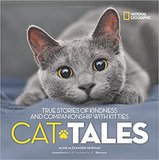 For more stories of remarkable kitties, check out Aline Alexander Newman’s new book, CAT TALES. In it, you’ll meet Millie, the adventurous cat who rock climbs with her owner; Pudditat, who acts as a “seeing eye” cat for the family dog; Leo, a lion who changed the life of one family forever; and 20 other charming cats that will pounce into your heart. Personalized copies of CAT TALES and Aline’s other books are available at www.alinealexandernewman.com. Aline is also a member of Authors on Call. Bring her into your classroom via interactive video conferencing. Here’s where you can learn more about her and her programs. MLA 8 Citation
Newman, Aline Alexander. "Do Animals Ask for Help?" Nonfiction Minute, iNK Think Tank, 9 May 2018, www.nonfictionminute.org/the-nonfiction-minute/ Do-Animals-Ask-for-Help.
3 Comments
With its red dirt roads, cobalt sky, and deep green forests, Canada’s Prince Edward Island looks idyllic. Yet on October 3, 1994, a horrible crime took place there. Shirley Duguay, 32, disappeared and was believed murdered. But searchers looked for weeks, and all they found was her blood-spattered car. Then a man’s blood-stained jacket turned up in the woods. Stuck to the lining were several stiff, white hairs. Constable Savoie, of the Royal Canadian Mounted Police, remembered seeing an all-white tomcat named Snowball at the home of his chief suspect, Douglas Beamish. Beamish was Shirley’s sometime boyfriend and an ex-con. Could those hairs be from Snowball? If so, they would tie Beamish to Shirley’s car—the scene of the crime. Savoie sent the jacket to the police lab for a DNA examination. Found in body cells, DNA is like a chemical fingerprint. It’s unique to every individual. And the blood on the jacket matched the blood in the car. But the lab wouldn’t test the animal hairs. “We only do humans,” the scientists said. Frustrated, Savoie called lab after lab. They all refused. Finally, he contacted Dr. Stephen J. O’Brien. Dr. O’Brien ran a laboratory at the National Cancer Institute, in Frederick, Maryland. He was studying house cats in hopes of finding treatments for human diseases. “You’re my last hope,” Savoie pleaded. Dr. O’Brien asked Savoie for a blood sample from Snowball. That would give him two kinds of fur-ensic, er, forensic evidence—blood and hairs. Then he told Savoie to follow FBI guidelines and pack the evidence in separate canisters, hop a plane, and hand-deliver them. Dr. O’Brien’s team compared the DNA in Snowball’s hair to the DNA in his blood. Bingo! It was an almost purr-fect match! But Prince Edward Island is small and isolated. What if many island cats were related, with similar DNA? Savoie went cat-catching again and collected blood samples from a bunch of neighborhood fur balls. To Dr. O’Brien’s relief, their DNA profiles were all different. Statistically, the chance of another cat having DNA similar to Snowball’s was one in forty-five million! Meanwhile, a fisherman stumbled upon Shirley’s body. Roger Beamish was arrested. Thanks to Dr. O’Brien’s testimony, he was found guilty at trial and sentenced to 18 years in prison. This marked the first time animal DNA was used to convict a criminal. Score one for Dr. O’Brien, Constable Savoie, and Deputy Snowball! 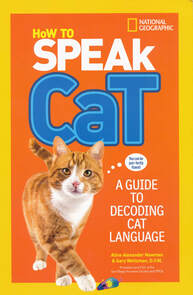 With veterinarian expert Dr. Gary Weitzman as guide, Aline Alexander Newman helps kids understand what cats are trying to communicate by their body language and behavior. So if you've ever wondered what Fluffy means when she's purring or moving her tail emphatically from left to right--How to Speak Cat: A Guide to Decoding Cat Language is for you! It's full of insights, expert advice, and real-life cat scenarios, and showcases more than 30 poses, so you'll soon learn what each meow and flick of the tail means! Percy the coal black cat is a born wanderer. The former barn cat sleeps by the woodstove in winter. But in summer, he leaves after breakfast and stays out all night. For years, his owners, Anne and Yale Michael, never knew where he went. Then a friend called to tell them that Percy had made the front page of the local newspaper. The Michaels live in Scarborough, North Yorkshire, in the United Kingdom, a pretty seaside town on the Atlantic coast. Tourists flock there in summer to go to the beach and ride the miniature train that runs along it. According to the newspaper, their Percy was also riding the rails! “We were shocked,” Yale says. “I wondered if it was really our cat.” Because the frisky feline was always losing his collar and tags, no one knew who owned Percy or where he lived. But after their friend recognized him in that front-page newspaper article, radio and television stories followed. Percy became famous. The train station is half a mile (0.8 km) from the Michaels’ home. To get there, Percy has to walk down the alley beside their house and cross the neighbor’s yard and a golf club parking lot (where he occasionally stops for meaty handouts). Finally, he trots over to the sea cliff and through some woods down to the railway. Once Percy arrives at the train station, he dozes on a mat the railway workers have laid out for him until he hears the train whistle. Then, every day, he boards the train, takes a seat, and rides to the Sea Life Centre. Perhaps the smell of fish drew him there originally. But that isn’t why he visits now. The curious cat behaves like any human tourist and visits the marine sanctuary to view the exhibits. The penguins are his favorite. Percy might watch them strut about for half an hour, before he strolls into the office where aquarium workers have been welcoming him for years. When it’s time to leave, the furry penguin watcher hops back on the train for the trip home. The Michaels rode the tourist train once. “He got off, as we got on,” says Yale. “We said, ‘Hi, Percy.’“ He turned around and came to us.” But only in greeting. Then their popular, wandering pet continued on his independent way. Now that they know about his daytime adventures, they’re waiting to hear what he does at night. Perhaps a local disco? Percy enjoying the penguins at the Sea Center. Percy’s choice of transit: The North Bay Railroad running from Scarborough to the Sea Life Centre. 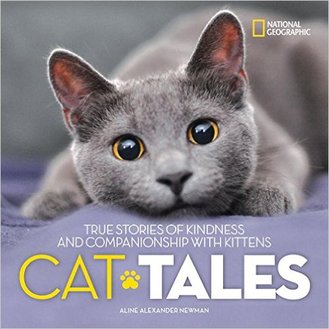 Aline Alexander Newman is a lifelong animal lover who has written more than 50 magazine stories about animals from dogs to cheetahs to dolphins. Her love of cats is reflected in her recently published Cat Tales: True Stories of Kindness and Companionship with Kittens. MLA 8 Citation
Newman, Aline Alexander. "Percy the Cat." Nonfiction Minute, iNK Think Tank, 13 Dec. 2017, www.nonfictionminute.org/Percy-the-cat. 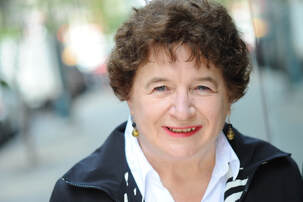 One warm, August day in 2020, Mark Eddy, of Old Forge, New York, spotted two wild turkeys in his backyard. Hmm, thought Eddy. Whitetail deer wander all around this Adirondack village. But turkeys? They're rare. Still, this pair of gobblers began showing up almost every day, twice a day. In September, one turkey disappeared. Then the snow came. Aware that many turkeys perish in the harsh, Adirondack winters, Eddy decided to feed his remaining feathered friend. First, he learned to make two turkey sounds with his mouth--a rolling "brrrp" sound called a purr that he uses to calm the turkey and a "chip, chip" noise to call him to supper. It worked. "If I see him roosting in a tree in the morning and call him, he'll come down," Eddy says. "If he's across the street, he'll run over." Commercial bird seed mix. Sunflower seeds. Cracked corn. Even live mealworms. The turkey loves them all. But talk about picky. "I put dried mealworms in his food once," says Eddy. "He focused one eye on them, looked sideways suspicious like, and walked away!" The big bird trotted all over town, peering into movie theater doors, storefronts, and the school. He often turned up in the school's bus circle at dismissal time, amusing the kids. As his celebrity grew, one woman purchased a turkey costume that she parades around in for laughs. Many people enjoy having a town turkey, but some don't. Perhaps they fear he'll scratch the paint on their cars when he perches on them. Or maybe they dislike him wandering into the road and stopping traffic, sometimes in both directions. Now that spring is here, the turkey doesn't come around as much. When he does appear, he's likely to be strutting about fanning his tail. Female turkeys (hens) occasionally do that, but it's usually done by male birds (Toms) hoping to attract a female. Which begs another question. Is the town turkey male or female? Some fans nicknamed it Henrietta Thomasina, in an attempt to cover both bases. However, Eddy now believes the turkey is a young male (jake). Why? "When he's excited or acting aggressive, his head turns bright blue," Eddy says. Only males do that. Not yet old enough to grow a beard from his chest, this young jake is old enough to find a mate. Once he does, the town turkey won't be alone anymore. 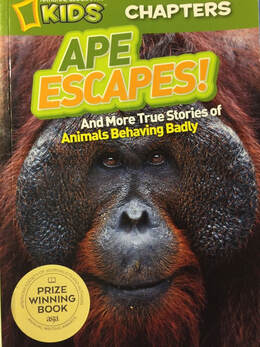 Aline Alexander Newman is a lifelong animal lover who has written more than 50 magazine stories about animals from cats and dogs to tortoises and whales. Her love of orangutans is reflected in her popular book, Ape Escapes! and More True Stories of Animals Behaving Badly (National Geographic Kids Chapters). |
*NEWS
|
For Vicki Cobb's BLOG (nonfiction book reviews, info on education, more), click here: Vicki's Blog
The NCSS-CBC Notable Social Studies Committee is pleased to inform you
that 30 People Who Changed the World has been selected for Notable Social Studies Trade Books for Young People 2018, a cooperative project of the National Council for the Social Studies (NCSS) & the Children’s Book Council
Categories
All
Abolitionists
Adams Janus
Adaptation
Adaptations
Adkins Jan
Advertising
Aerodynamics
Africa
African American History
African Americans
Africa West
Agriculture
Aircraft
Air Pilots
Air Pressure
Air Travel
Albee Sarah
Alchemy
Alligators
Allusion
American History
American Icons
Amphibians
Amundsen Roald
Anatomy
Ancient
Ancient Cultures
Anderson Marian 1897-1993
Animal Behavior
Animal Experimentation
Animal Intelligence
Animals
Animation
Antarctica
Ants
Apache Indians
Apes
April Fool's Day
Architecture
Argument
Arithmetic
Art
Art Deco
Artists
Arts
Asia
Astronauts
Astronomy
Athletes
Atomic Theory
Audubon Societies
Authors
Autobiography
Automobiles
Aviation
Awards
Bacteria
Baseball
Battuta Ibn
Bears
Beatles
Beavers
Bees
Biodegradation
Biography
Biology
Biomes
Biomimicry
Biplanes
Birds
Black Death
Black History
Blindness
Blizzards
Bombs
Bonaparte Napoleon
Boone Daniel
Botany
Brazil
Bridges
Brill Marlene Targ
Brooklyn Bridge
Brown John
Buffaloes
Building Materials
Butterflies
Caesar
Caesar Julius
Caissons
Calculus
Calendars
Cannibal
Capitals
Caravaggio
Carbon Dioxide
Carnivores
Carson Mary Kay
Cartoons & Comics
Carving (Decorative Arts)
Cascade Range
Castaldo Nancy
Castles
Castrovilla Selene
Cathedrals
Cats
Caves
Celts
Cemeteries
Chemistry
Children's Authors
Child Welfare
China
Choctaw Indians
Christmas
Chronometers
Cicadas
Cinco De Mayo
Ciphers
Circle
Citizenship
Civil Rights
Civil Rights Movements
Civil War
Civil War - US
Climate
Climate Change
Clocks And Watches
Clouds
Cobb Vicki
COBOL (Computer Language)
Code And Cipher Stories
Collard III Sneed B.
Collectors And Collecting
Color
Commerce
Communication
Competition
Compilers
Composers
Computers
Congressional Gold Medal
Consitution
Contests
Contraltos
Coolidge Calvin
Cooling
Corms
Corn
Counterfeiters
Covid-19
Crocodiles
Cryptography
Culture
Darwin Charles
Declaration Of Independence
Decomposition
Decompression Sickness
Deep-sea Animals
Deer
De Medici Catherine
Design
Detectives
Dickens Charles
Disasters
Discrimination
Diseases
Disney Walt
DNA
Dogs
Dollar
Dolphins
Douglass Frederick 1818-1895
Droughts
Dr. Suess
Dunphy Madeleine
Ear
Earth
Earthquakes
Ecology
Economics
Ecosystem
Edison Thomas A
Education
Egypt
Eiffel-gustave-18321923
Eiffel-tower
Einstein-albert
Elephants
Elk
Emancipationproclamation
Endangered Species
Endangered-species
Energy
Engineering
England
Englishlanguage-arts
Entomology
Environmental-protection
Environmental-science
Equinox
Erie-canal
Etymology
Europe
European-history
Evolution
Experiments
Explorers
Explosions
Exports
Extinction
Extinction-biology
Eye
Fairs
Fawkes-guy
Federalgovernment
Film
Fires
Fishes
Flight
Floods
Flowers
Flute
Food
Food-chains
Foodpreservation
Foodsupply
Food-supply
Football
Forceandenergy
Force-and-energy
Forensicscienceandmedicine
Forensic Science And Medicine
Fossils
Foundlings
France
Francoprussian-war
Freedom
Freedomofspeech
French-revolution
Friction
Frogs
Frontier
Frontier-and-pioneer-life
Frozenfoods
Fugitiveslaves
Fultonrobert
Galapagos-islands
Galleys
Gametheory
Gaudi-antoni-18521926
Gender
Generals
Genes
Genetics
Geography
Geology
Geometry
Geysers
Ghosts
Giraffe
Glaciers
Glaucoma
Gliders-aeronautics
Global-warming
Gods-goddesses
Gold-mines-and-mining
Government
Grant-ulysses-s
Grasshoppers
Gravity
Great-britain
Great-depression
Greece
Greek-letters
Greenberg Jan
Hair
Halloween
Handel-george-frederic
Harness Cheryl
Harrison-john-16931776
Health-wellness
Hearing
Hearing-aids
Hearst-william-randolph
Henry-iv-king-of-england
Herbivores
Hip Hop
History
History-19th-century
History-france
History-world
Hitler-adolph
Hoaxes
Holidays
Hollihan Kerrie Logan
Homestead-law
Hopper-grace
Horses
Hot Air Balloons
Hot-air-balloons
Housing
Huguenots
Human Body
Hurricanes
Ice
Icebergs
Illustration
Imagery
Imhotep
Imperialism
Indian-code-talkers
Indonesia
Industrialization
Industrial-revolution
Inquisition
Insects
Insulation
Intelligence
Interstatecommerce
Interviewing
Inventions
Inventors
Irrational-numbers
Irrigation
Islands
Jacksonandrew
Jazz
Jeffersonthomas
Jefferson-thomas
Jemisonmae
Jenkins-steve
Jet-stream
Johnsonlyndonb
Jokes
Journalism
Keeling-charles-d
Kennedyjohnf
Kenya
Kidnapping
Kingmartinlutherjr19291968
Kingmartinlutherjr19291968d6528702d6
Kings-and-rulers
Kings Queens
Kings-queens
Koala
Labor
Labor Policy
Lafayette Marie Joseph Paul Yves Roch Gilbert Du Motier Marquis De 17571834
Landscapes
Languages-and-culture
Law-enforcement
Layfayette
Levers
Levinson Cynthia
Lewis And Clark Expedition (1804-1806)
Lewis Edmonia
Liberty
Lift (Aerodynamics)
Light
Lindbergh Charles
Liszt Franz
Literary Devices
Literature
Lizards
Longitude
Louis XIV King Of France
Lumber
Lunar Calendar
Lynching
Macaws
Madison-dolley
Madison-james
Madison-james
Mammals
Maneta-norman
Maneta-norman
Marathon-greece
Marine-biology
Marine-biology
Marines
Marsupials
Martial-arts
Marx-trish
Mass
Massachusetts-maritime-academy
Mass-media
Mastodons
Mathematics
May-day
Mcclafferty-carla-killough
Mcclafferty-carla-killough
Mckinley-william
Measurement
Mechanics
Media-literacy
Media-literacy
Medicine
Memoir
Memorial-day
Metaphor
Meteorology
Mexico
Mickey-mouse
Microscopy
Middle-west
Migration
Military
Miners
Mississippi
Molasses
Monarchy
Monsters
Montgomery
Montgomery-bus-boycott-19551956
Montgomery-heather-l
Monuments
Moon
Moran-thomas
Morsecode
Morsesamuel
Moss-marissa
Moss-marissa
Motion
Motion-pictures
Mummies
Munro-roxie
Munro-roxie
Musclestrength
Museums
Music
Muslims
Mythologygreek
Nanofibers
Nanotechnology
Nathan-amy
Nathan-amy
Nationalfootballleague
Nationalparksandreserves
Nativeamericans
Native-americans
Native-americans
Naturalhistory
Naturalists
Nature
Nauticalcharts
Nauticalinstruments
Navajoindians
Navigation
Navy
Ncaafootball
Nervoussystem
Newdeal19331939
Newman-aline
Newman-aline
Newton-isaac
New-york-city
Nobelprizewinners
Nomads
Nonfictionnarrative
Nutrition
Nylon
Nymphs-insects
Oaths Of Office
Occupations
Ocean
Ocean-liners
Olympics
Omnivores
Optics
Origami
Origin
Orphans
Ottomanempire
Painters
Painting
Paleontology
Pandemic
Paper-airplanes
Parksrosa19132005
Parrots
Passiveresistance
Patent Dorothy Hinshaw
Peerreview
Penguins
Persistence
Personalnarrative
Personification
Pets
Photography
Physics
Pi
Pigeons
Pilots
Pinkertonallan
Pirates
Plague
Plains
Plainsindians
Planets
Plantbreeding
Plants
Plastics
Poaching
Poetry
Poisons
Poland
Police
Political-parties
Pollen
Pollution
Polo-marco
Populism
Portraits
Predation
Predators
Presidentialmedaloffreedom
Presidents
Prey
Prey-predators
Prey-predators
Prime-meridian
Pringle Laurence
Prohibition
Proteins
Protestandsocialmovements
Protestants
Protestsongs
Punishment
Pyramids
Questioning
Radio
Railroad
Rainforests
Rappaport-doreen
Ratio
Reading
Realism
Recipes
Recycling
Refrigerators
Reich-susanna
Religion
Renaissance
Reproduction
Reptiles
Reservoirs
Rheumatoidarthritis
Rhythm-and-blues-music
Rice
Rivers
Roaringtwenties
Roosevelteleanor
Rooseveltfranklind
Roosevelt-franklin-d
Roosevelt-theodore
Running
Russia
Safety
Sanitation
Schwartz David M
Science
Scientificmethod
Scientists
Scottrobert
Sculpture
Sculpturegardens
Sea-level
Seals
Seals-animals
Secretariesofstate
Secretservice
Seeds
Segregation
Segregationineducation
Sensessensation
September11terroristattacks2001
Seuss
Sextant
Shackletonernest
Shawneeindians
Ships
Shortstories
Silkworms
Simple-machines
Singers
Siy Alexandra
Slavery
Smuggling
Snakes
Socialchange
Social-change
Socialjustice
Social-justice
Socialstudies
Social-studies
Social-studies
Sodhouses
Solarsystem
Sound
Southeast-asia
Soybean
Space Travelers
Spain
Speech
Speed
Spiders
Spies
Spiritualssongs
Sports
Sports-history
Sports-science
Spring
Squirrels
Statue-of-liberty
STEM
Storms
Strategy
Sugar
Sumatra
Summer
Superbowl
Surgery
Survival
Swanson-jennifer
Swinburne Stephen R.
Synthetic-drugs
Taiwan
Tardigrada
Tasmania
Tasmanian Devil
Tasmanian-devil
Technology
Tecumsehshawneechief
Telegraph-wireless
Temperature
Tennis
Terrorism
Thomas Peggy
Thompson Laurie Ann
Time
Titanic
Tombs
Tortoises
Towle Sarah
Transcontinental-flights
Transportation
Travel
Trees
Trung Sisters Rebellion
Tundra
Turnips
Turtles
Typhoons
Underground Railroad
Us-environmental-protection-agency
Us History
Us-history
Ushistoryrevolution
Us History Revolution
Us-history-war-of-1812
Us Presidents
Ussupremecourtlandmarkcases
Vacations
Vaccines
Vangoghvincent
Vegetables
Venom
Vietnam
Viruses
Visual-literacy
Volcanoes
Voting-rghts
War
Warne-kate
Warren Andrea
Washington-dc
Washington George
Water
Water-currents
Wax-figures
Weapons
Weather
Weatherford Carole Boston
Whiting Jim
Wildfires
Winds
Windsor-castle
Wolves
Woman In History
Women
Women Airforce Service Pilots
Women-airforce-service-pilots
Womeninhistory
Women In History
Women-in-science
Women's History
Womens-roles-through-history
Wonder
Woodson-carter-godwin-18751950
World-war-i
World War Ii
World-war-ii
Wright Brothers
Writing
Writing-skills
Wwi
Xrays
Yellowstone-national-park
Zaunders Bo
ArchivesMarch 2021
February 2021
January 2021
December 2020
November 2020
October 2020
September 2020
June 2020
May 2020
April 2020
March 2020
February 2020
January 2020
December 2019
October 2019
September 2019
August 2019
July 2019
May 2019
April 2019
March 2019
February 2019
January 2019
December 2018
November 2018
September 2018
June 2018
May 2018
April 2018
March 2018
February 2018
January 2018
December 2017
November 2017
October 2017
September 2017
March 2017
The NONFICTION MINUTE, Authors on Call, and. the iNK Books & Media Store are divisions of iNK THINK TANK INC.
a 501 (c) (3) nonprofit corporation. To return to the iNK Think Tank landing page click the icon or the link below. :
http://inkthinktank.org/
For more information or support, contact thoughts@inkthinktank.org
For Privacy Policy, go to
Privacy Policy
© COPYRIGHT the Nonfiction Minute 2020.
ALL RIGHTS RESERVED.
This site uses cookies to personalize your experience, analyze site usage, and offer tailored promotions. www.youronlinechoices.eu
Remind me later
Archives
March 2023
February 2023
January 2023
December 2022
November 2022
October 2022
September 2022
June 2022
May 2022
April 2022
March 2022
February 2022
January 2022
December 2021
November 2021
September 2021
April 2021
March 2021
February 2021
November 2020
October 2020
September 2020
June 2020
May 2020
April 2020
March 2020
February 2020
January 2020
October 2019
August 2019
July 2019
May 2019
April 2019
December 2018
September 2018
June 2018
May 2018
March 2018
February 2018
January 2018
December 2017
November 2017
October 2017
September 2017



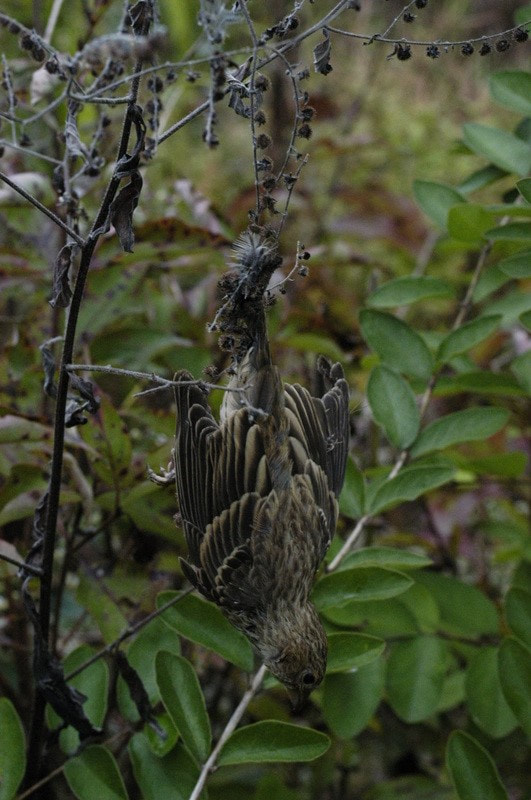
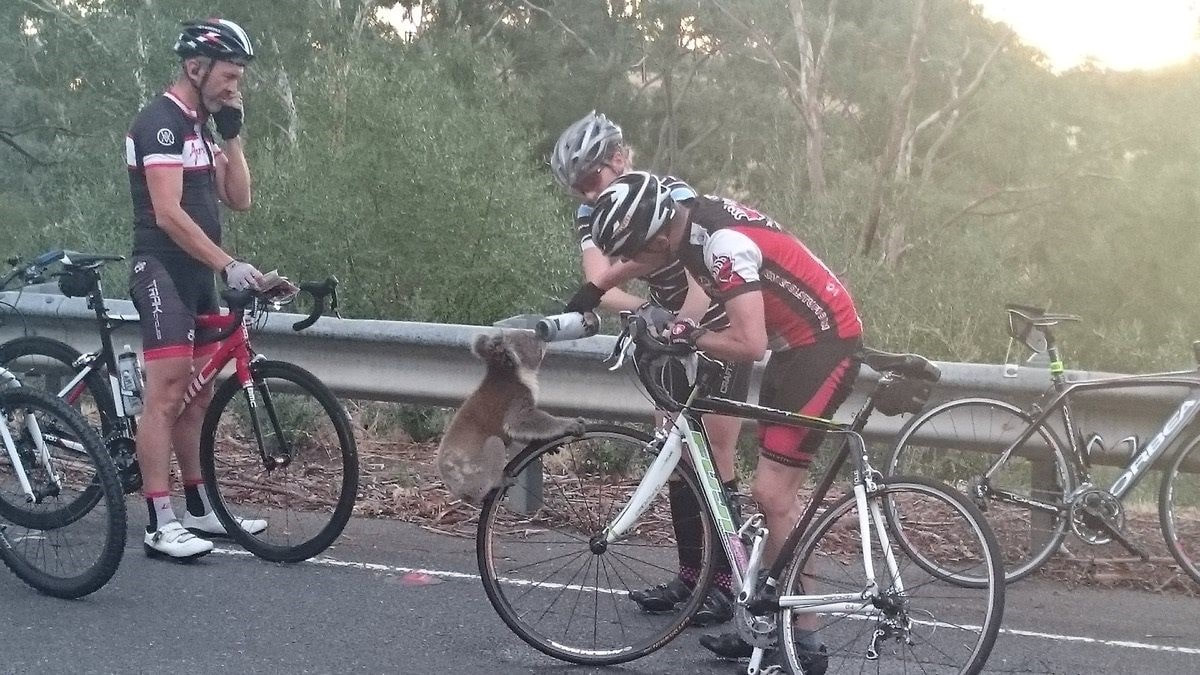
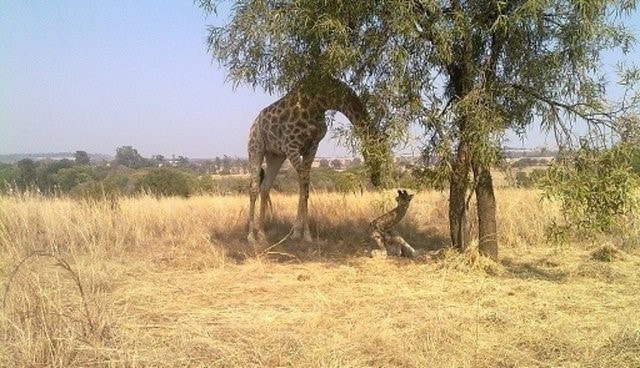


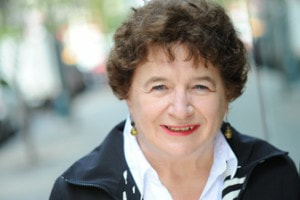

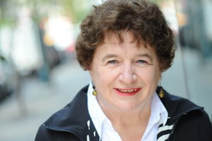

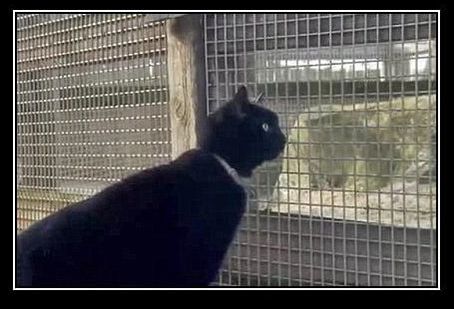




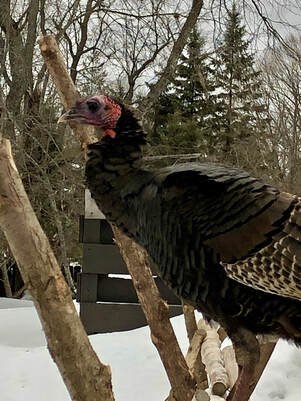
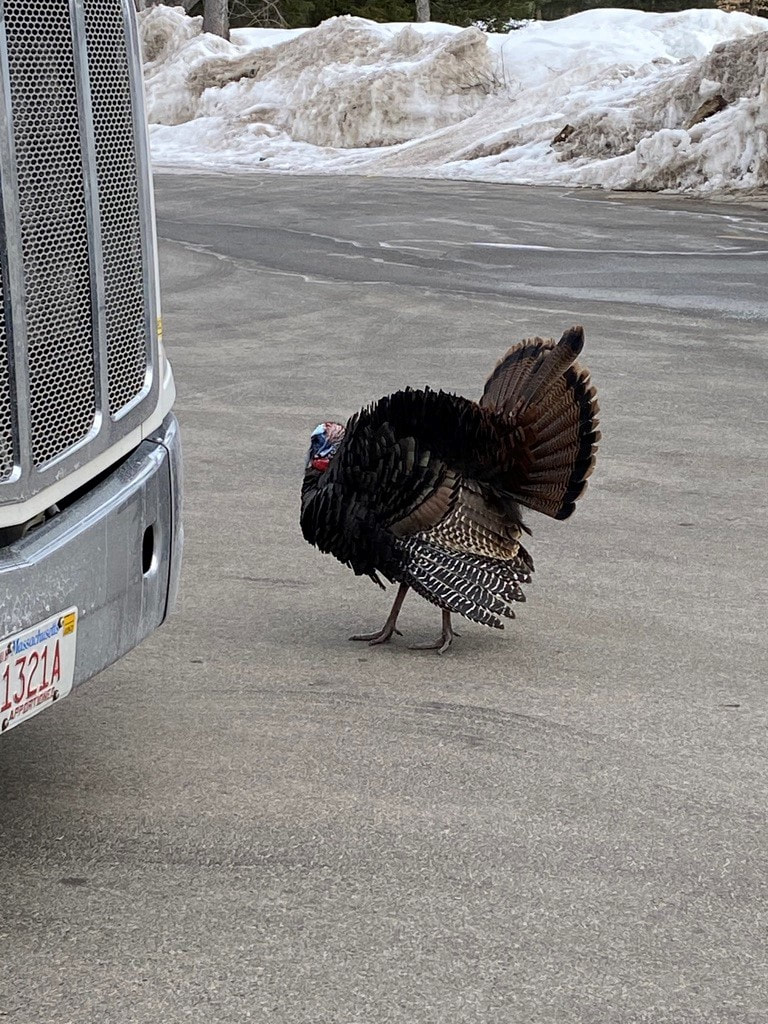
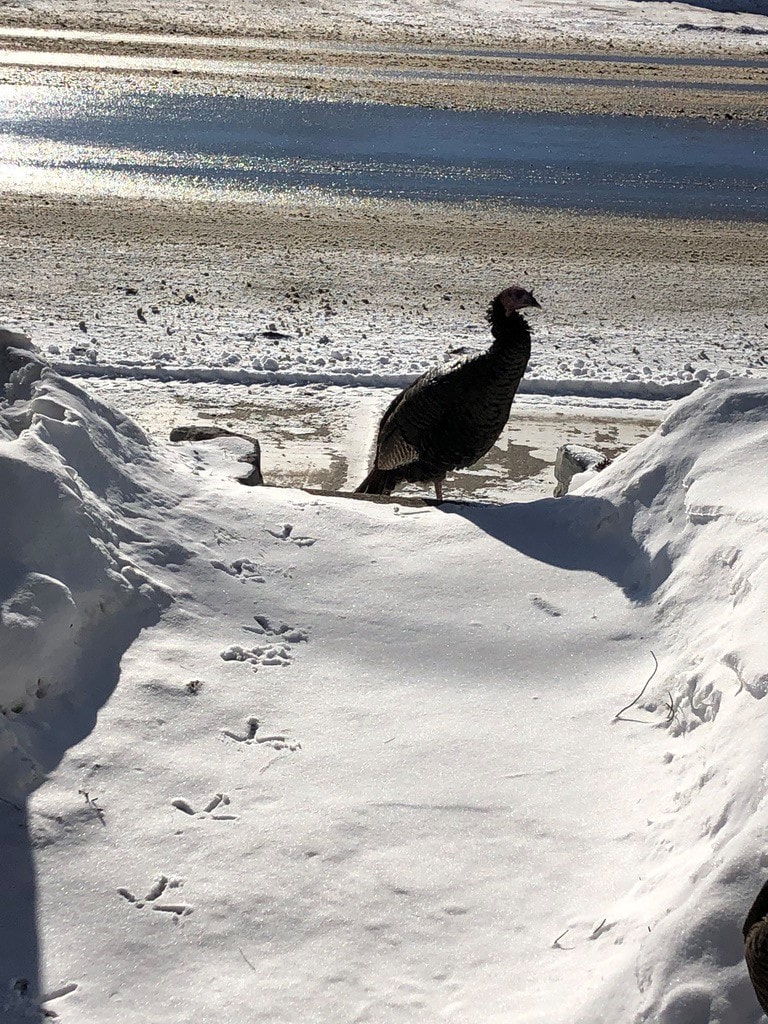
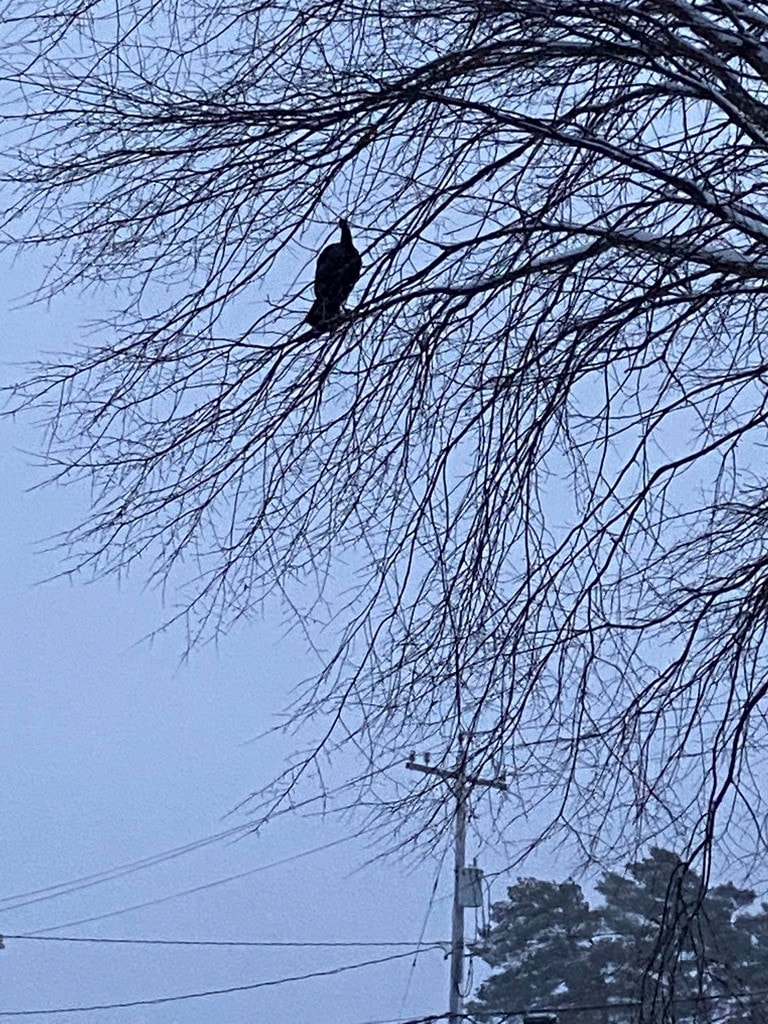
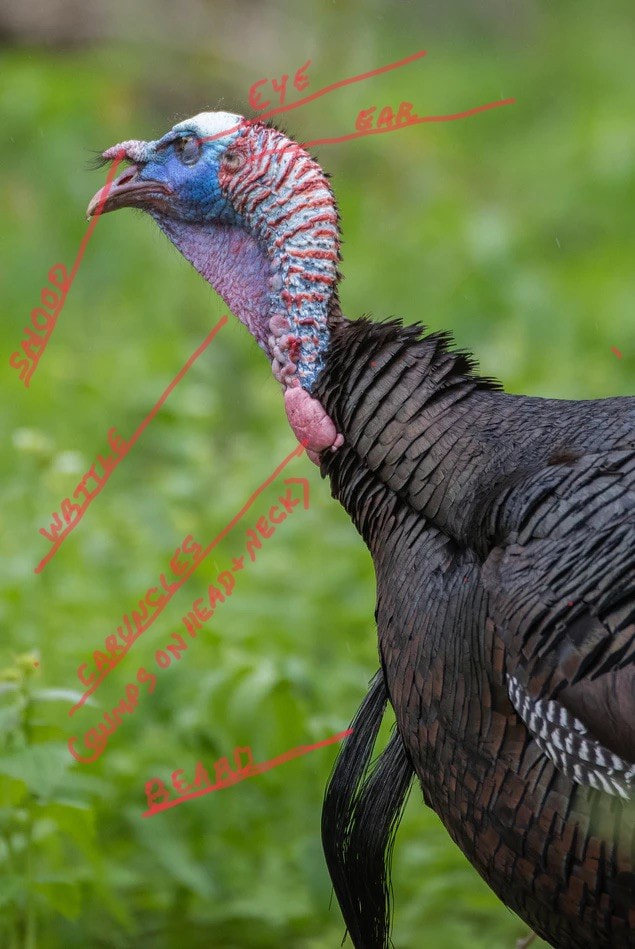
 RSS Feed
RSS Feed
